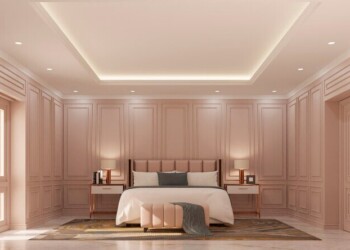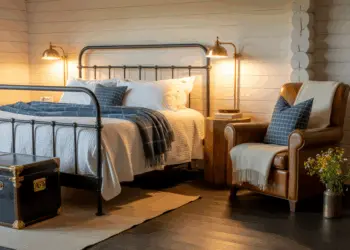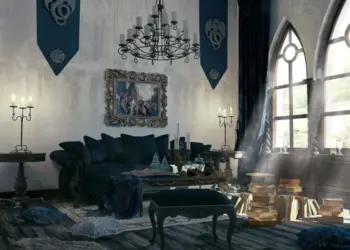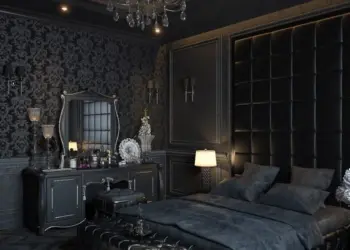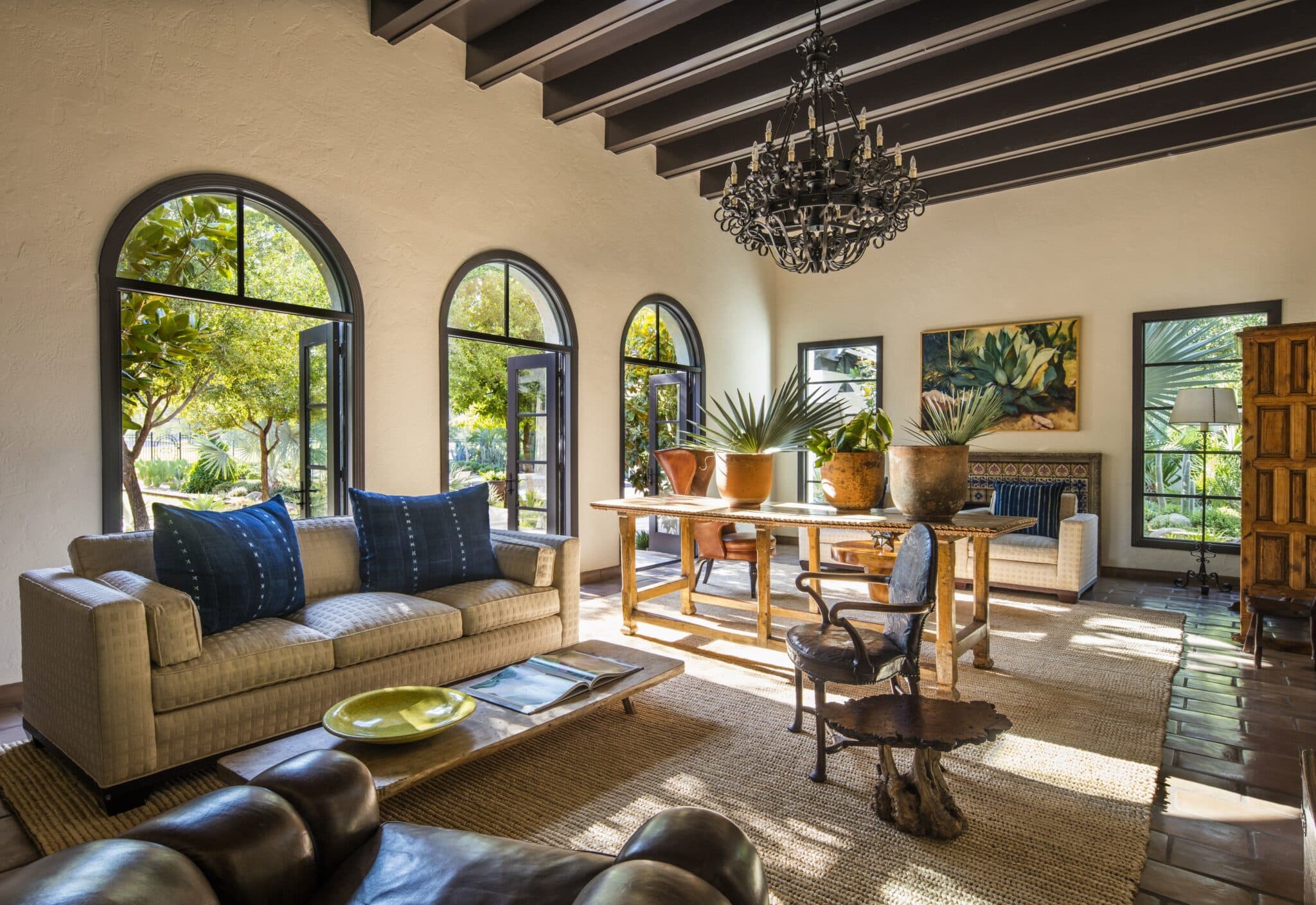Welcome, fellow connoisseurs of elegance and refinement, to the realm of old money interior design! In this captivating journey, we will unravel the secrets and nuances of interior design that exude the timeless charm and sophistication associated with generations of accumulated wealth. So, grab a seat on your antique Chesterfield sofa, and let’s dive into the opulent world of old money aesthetics!
Table of Contents
Unveiling Old Money House Features
Historic and Grand Architecture
Aristocratic homes stand as architectural masterpieces, boasting grand facades, columns, ornate details, and large-scale proportions. These homes serve as living testaments to the wealth and status accumulated over generations.
Vast Estates
Situated on extensive estates, these homes encompass manicured lawns, private parks, and even lakes or rivers. The expansive grounds add to the grandeur, reflecting the family’s commitment to a lifestyle of opulence.
Prime Locations
Strategically located in prestigious areas, whether exclusive neighborhoods, waterfront enclaves, or historical districts, these residences prioritize privacy, security, and proximity to cultural landmarks.
Size and Scale
Spacious interiors with multiple stories and abundant rooms characterize Old Money homes. Bedrooms, formal living areas, dining rooms, libraries, and specialized spaces for hobbies contribute to the overall grandeur.
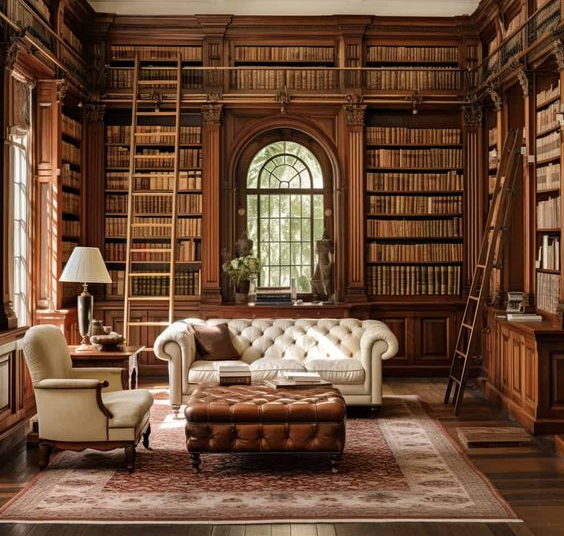
Family Heirlooms and Antiques
Old Money families cherish a rich collection of family heirlooms, antique furniture, artwork, and rare artifacts. These items, carrying historical and sentimental value, contribute to the unique character of these homes.
Lifestyle Amenities
Indoor swimming pools, home theaters, private chapels, and gyms are among the lifestyle amenities incorporated for the family’s enjoyment. These features showcase the luxurious living standards of Old Money households.
Staff Quarters
Due to the complexity of these residences, dedicated living spaces for staff ensure seamless property maintenance. Staff quarters include living spaces, kitchens, and offices, underscoring the meticulous management of the estate.
Emphasis on Privacy
Old Money families prioritize privacy, employing high walls, gated entrances, and advanced security systems to ensure seclusion and exclusivity for residents.
Formal Entertaining Spaces
Lavish ballrooms, formal dining rooms, and salons define the formal entertaining spaces within these homes. These areas are meticulously designed to host extravagant social events and gatherings.
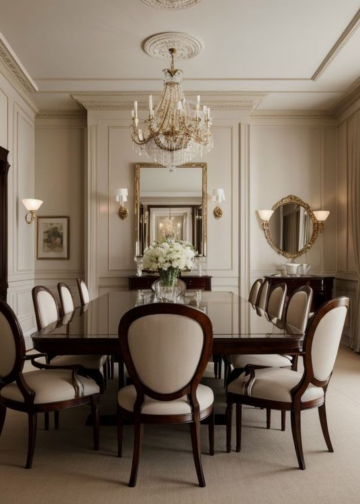
The Opulent Interior Design Styles
Traditional
Old Money homes often embrace traditional interior design, drawing inspiration from European styles like Georgian, Victorian interior design, or French Rococo style. Ornate furnishings, rich fabrics, and intricate woodwork characterize these interiors.
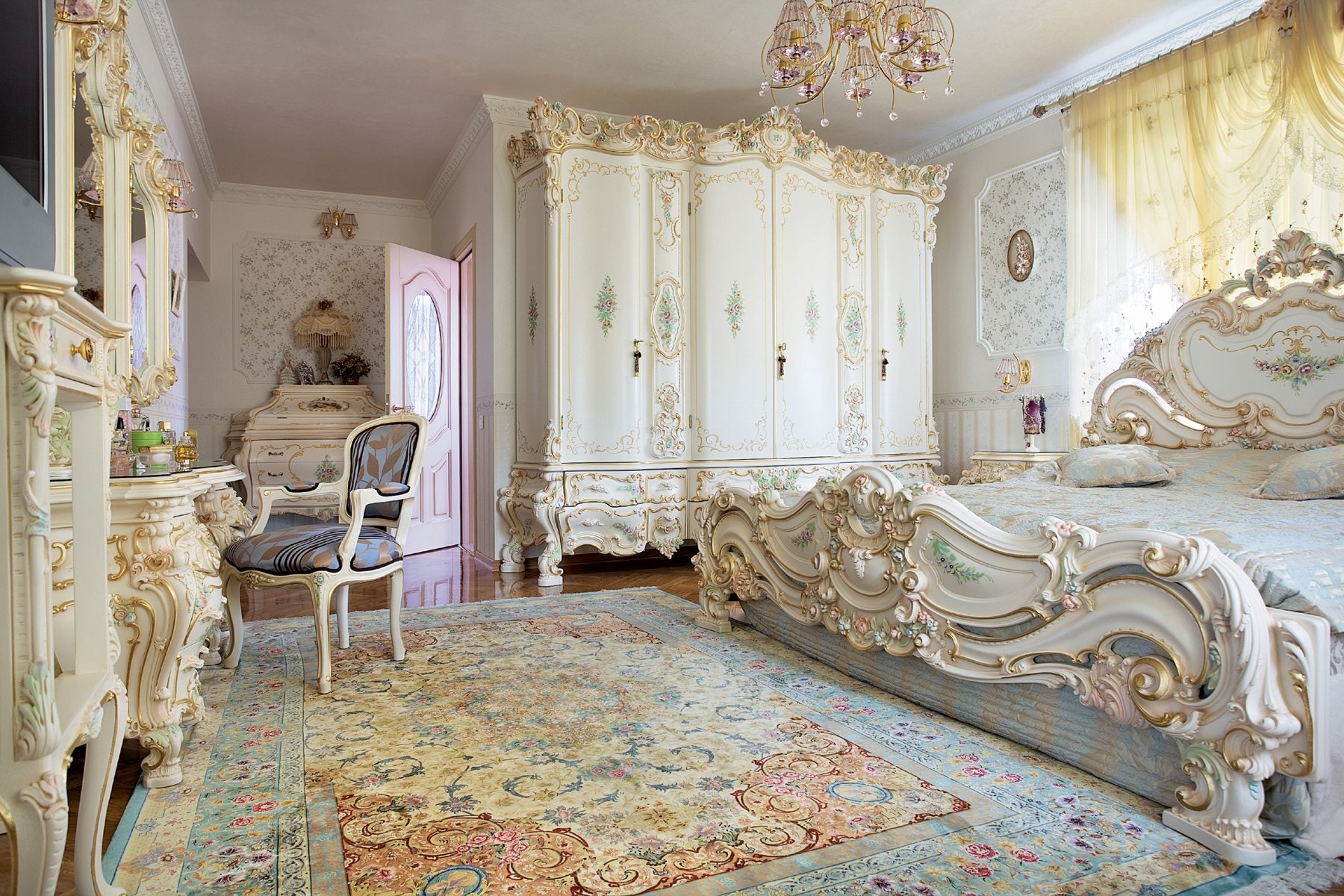
Classical
Taking cues from ancient Greek and Roman aesthetics, classical interior design incorporates symmetrical layouts, columns, and grand proportions, exuding timeless elegance.
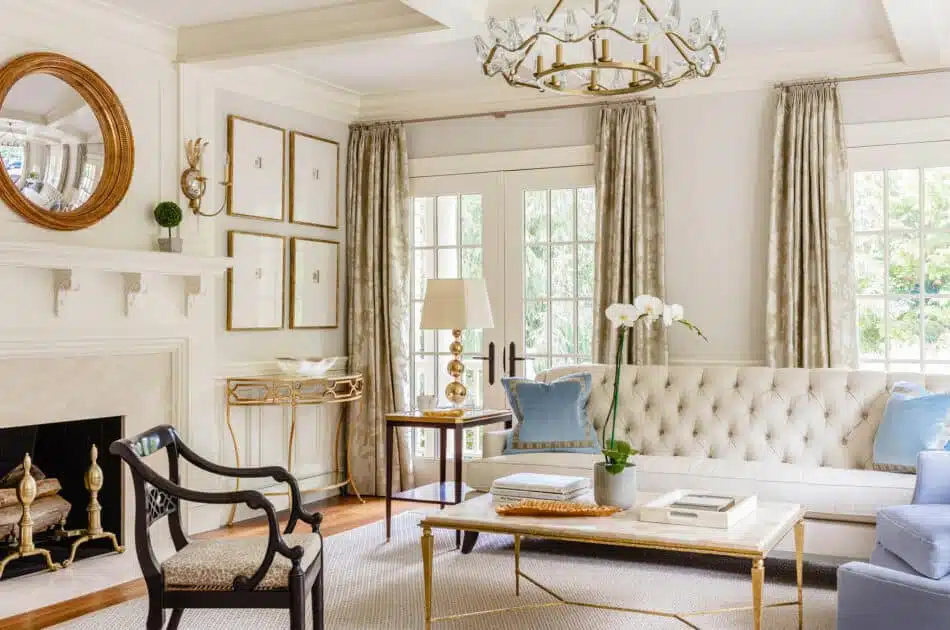
Neo-Classical
Emerging in the 18th century, Neo-Classical design style combines classical features with a lighter touch, featuring elegant furniture and subtle color palettes.
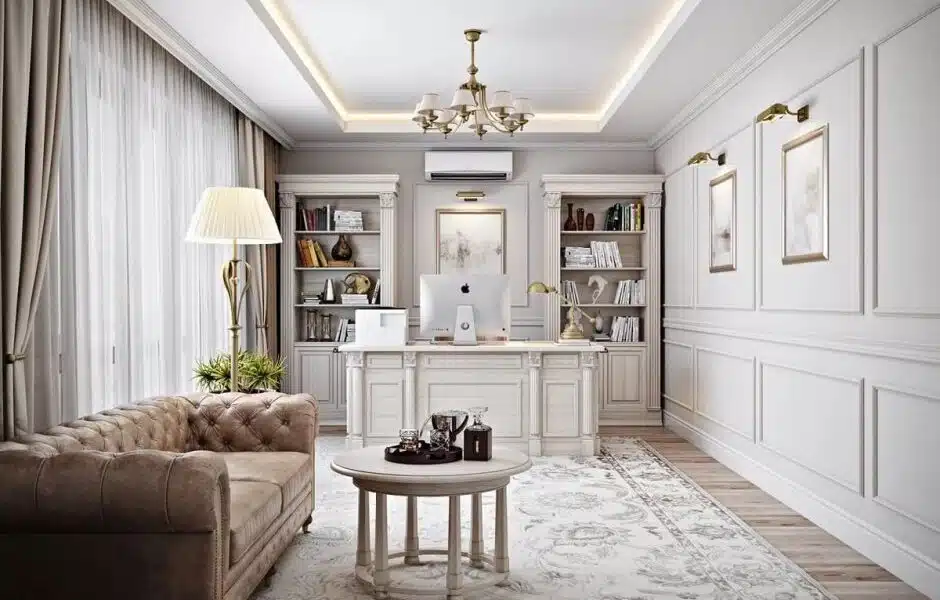
French Château
Inspired by grand European estates, French Château style emphasizes opulence with elaborate moldings, crystal chandeliers, and luxurious fabrics like silk and velvet.
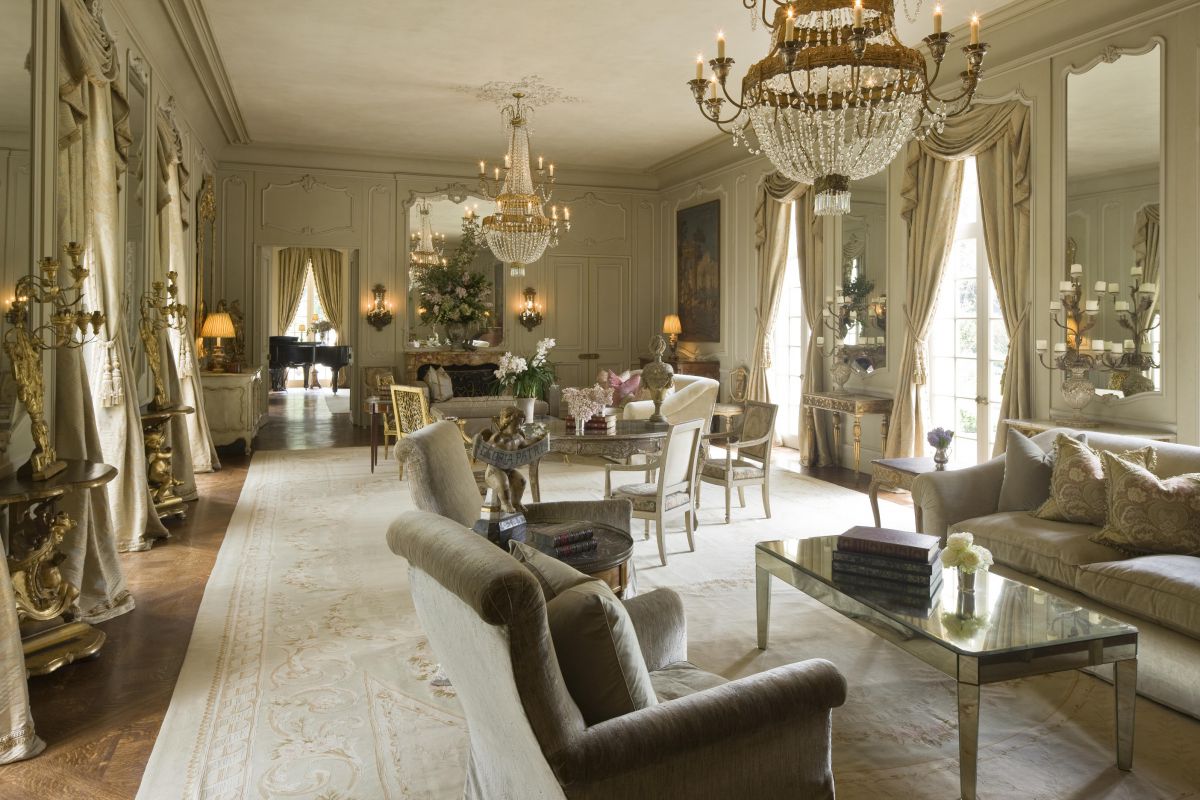
English Country
Found in British countryside estates, English Country style creats a cozy atmosphere with floral patterns, exposed wood beams, and antique furnishings.
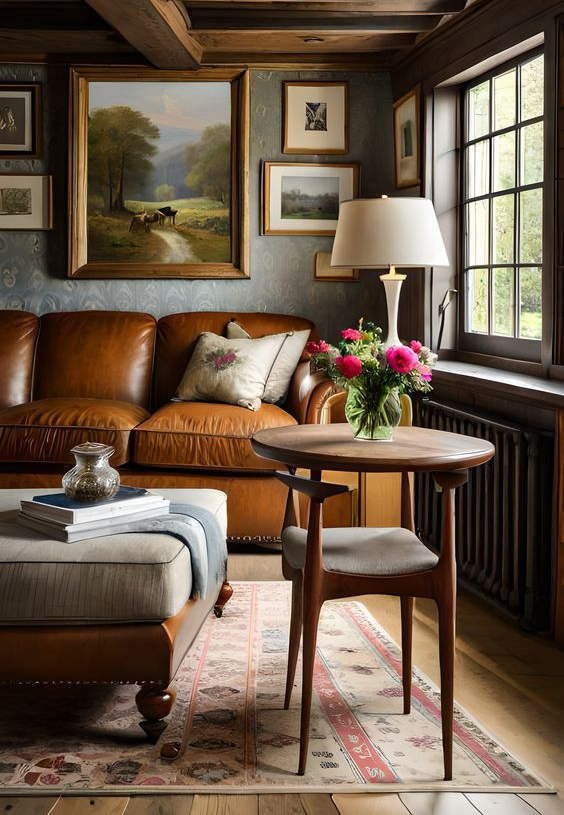
Renaissance
Emphasizing elegance and sophistication inspired by the Renaissance era, this style features carved woodwork, elaborate tapestries, and grand fireplaces.
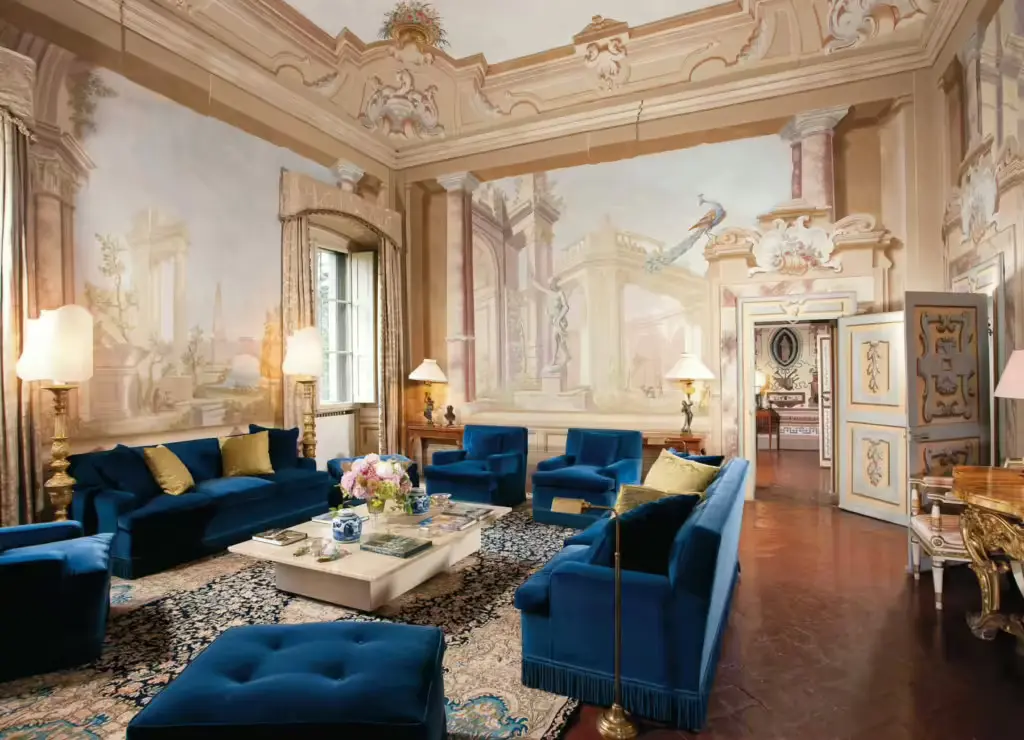
Colonial
Reflecting colonial history roots, this style blends European influences with local traditions, incorporating antique furniture and natural materials.
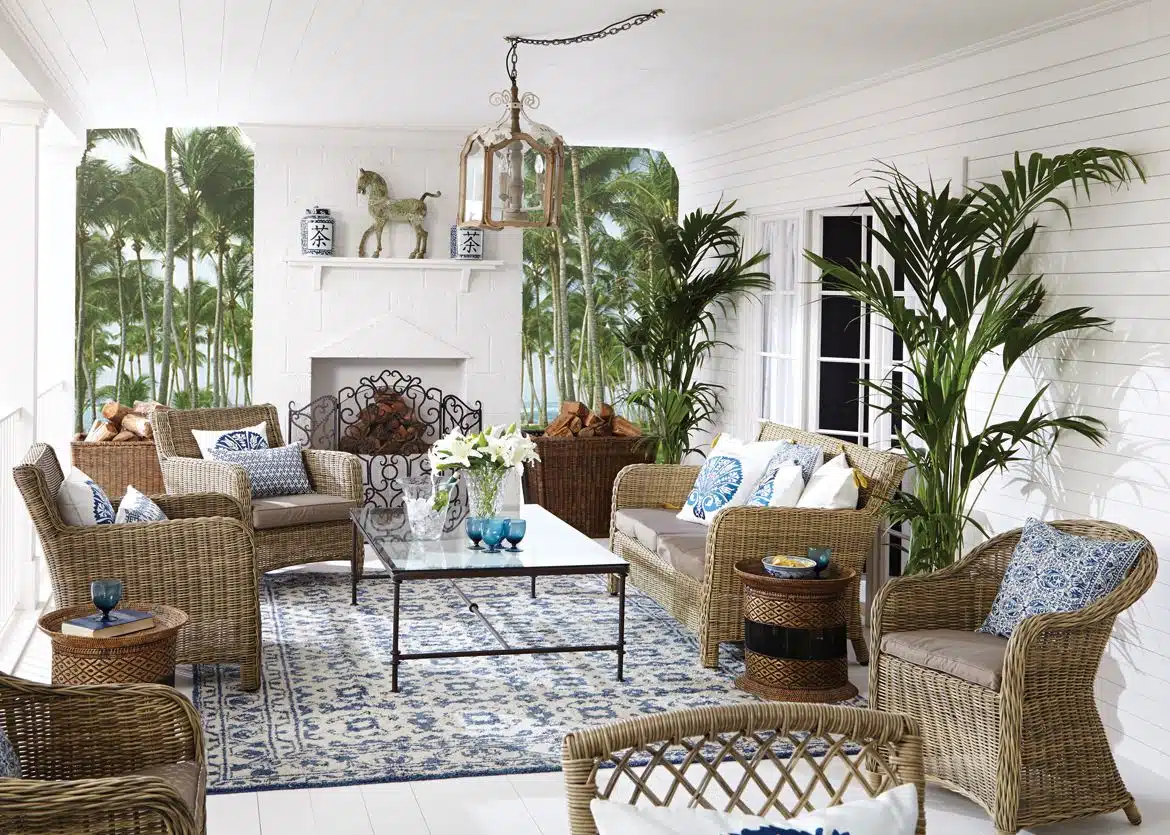
Regency
Popular in early 19th century England, Regency style features light interiors, pale color palettes, and a mix of classical and Oriental influences.
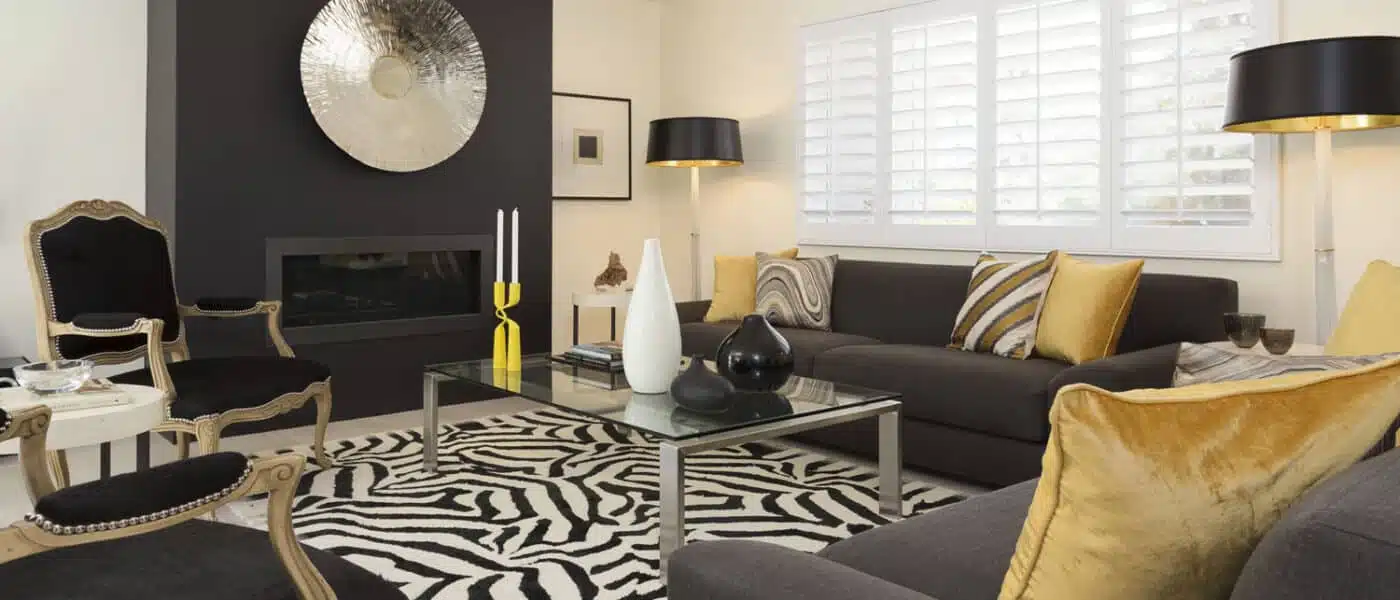
Art Deco
In the early 20th century, Art Deco design style became popular with geometric shapes, bold colors, and luxurious materials, defining affluent family homes.
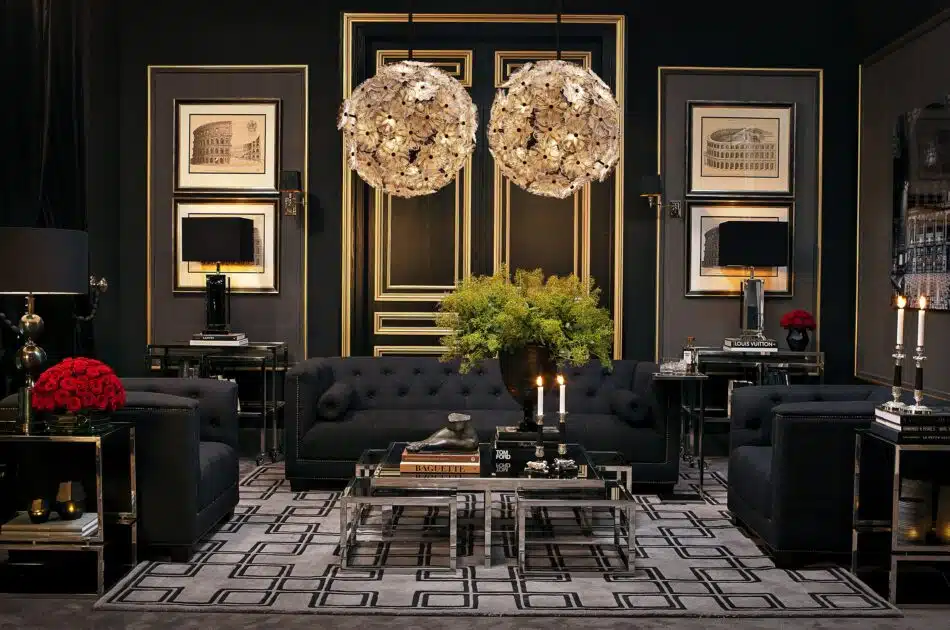
Old Money Interior Design Ideas: The Timeless Elegance
Old money interior design isn’t just about decorating a space; it’s a lifestyle, a statement, a celebration of heritage and taste. Picture a grand mansion with high ceilings, intricate moldings, and polished hardwood floors – that’s the canvas we’re working with. Let’s break down the essentials!
Classic Furniture Pieces: The Foundation
When it comes to old money interior design, furniture is more than just a place to sit or rest; it’s a legacy. Embrace the allure of antique furniture, plush upholstery, and craftsmanship that whispers tales of a bygone era. Think Chippendale chairs, claw-footed tables, and intricately carved armoires!
Earthy Color Palette: Subdued Grandeur
Bid farewell to flashy colors and welcome the warm, earthy tones that define old money interior design. Rich burgundies, deep greens, and regal blues set the stage for an ambiance that breathes refined luxury. It’s not about shouting for attention; it’s about commanding it with subtlety!

Luxurious Fabrics: Touch of Opulence
Feel the sumptuousness beneath your fingertips! Old money interior design revels in the embrace of lavish fabrics like silk, velvet, and damask. Drapes that pool gracefully on the floor, upholstery that invites you to sink in – these are the tactile pleasures that define opulence.
Antique Accents: Time-Tested Grace
In the world of old money interior design, every piece has a story to tell. Incorporate vintage chandeliers, gilded mirrors, and ornate candelabras to infuse your space with the charm of the past. These accents aren’t just decorations; they’re heirlooms that weave a narrative of elegance.
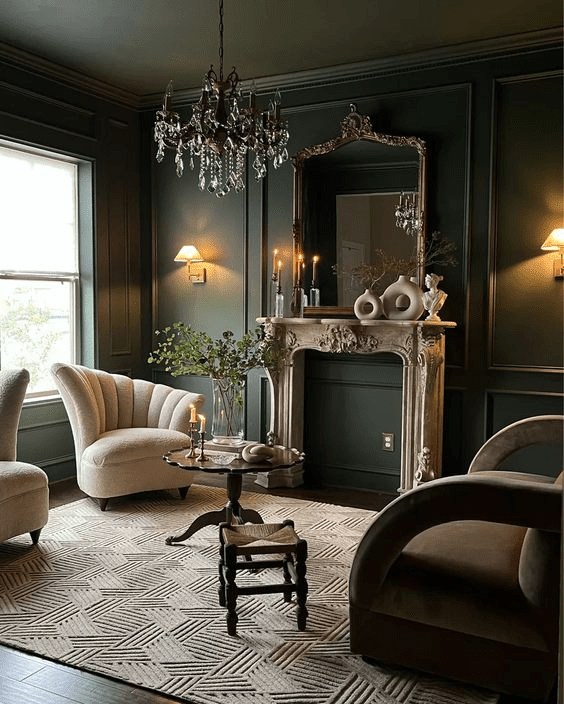
Dark Hardwood Floors
Symbolizing strength and enduring beauty, dark hardwood floors, whether mahogany, walnut, or ebony, add sophistication to Old Money home interiors.
Vintage Tableware
Exquisite vintage tableware in the dining room narrates a story of history and refinement. Classic china sets from renowned manufacturers like Limoges or Royal Copenhagen create an ambiance of luxury.
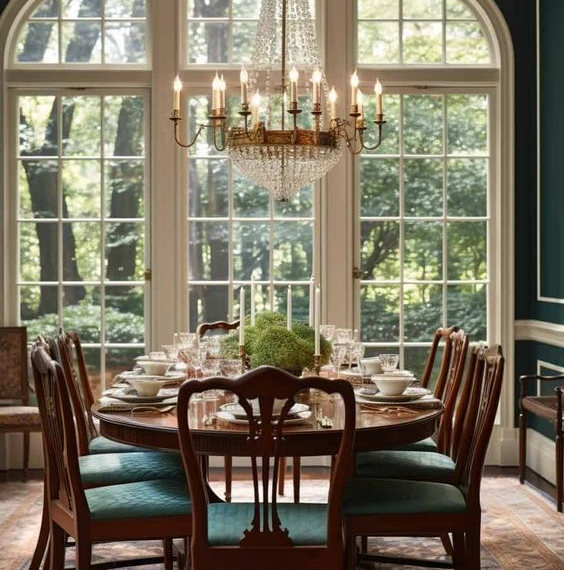
Wall Moldings
Adding depth and character, wall moldings like crown moldings and wainscoting contribute to an aristocratic feel in Old Money homes.
Old Artworks
Hanging old paintings, landscapes, and classical scenes in ornate gilded frames showcases wealth and taste, becoming stunning focal points in rooms.
Stained Glass Windows
Stunning stained glass windows bring historic and artistic flair to homes, serving as visual centerpieces that reflect the architectural style and personal taste.
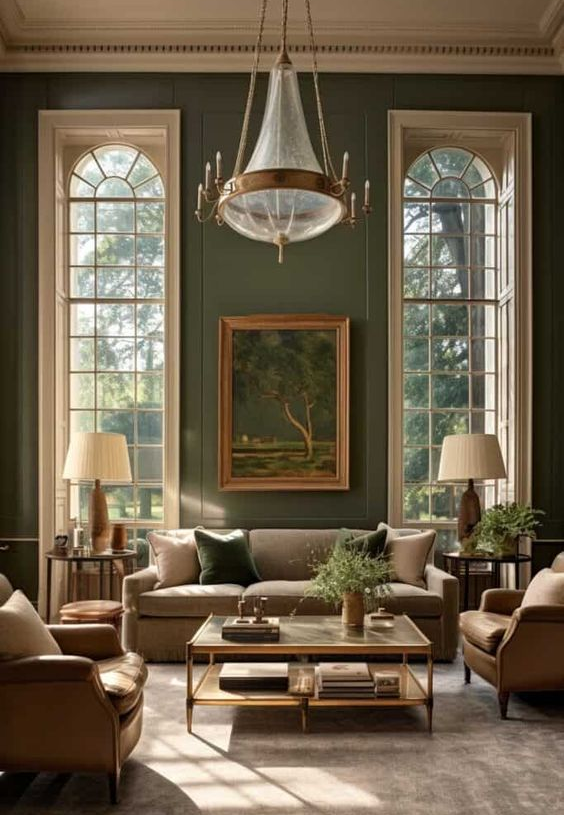
The Finishing Touch: Personalization
Old money interior design isn’t a rigid set of rules; it’s a canvas awaiting your personal touch. Here’s where you bring in inherited silverware, or that antique vase from your travels. These personal touches elevate the space from a beautiful showroom to a home infused with your unique character.
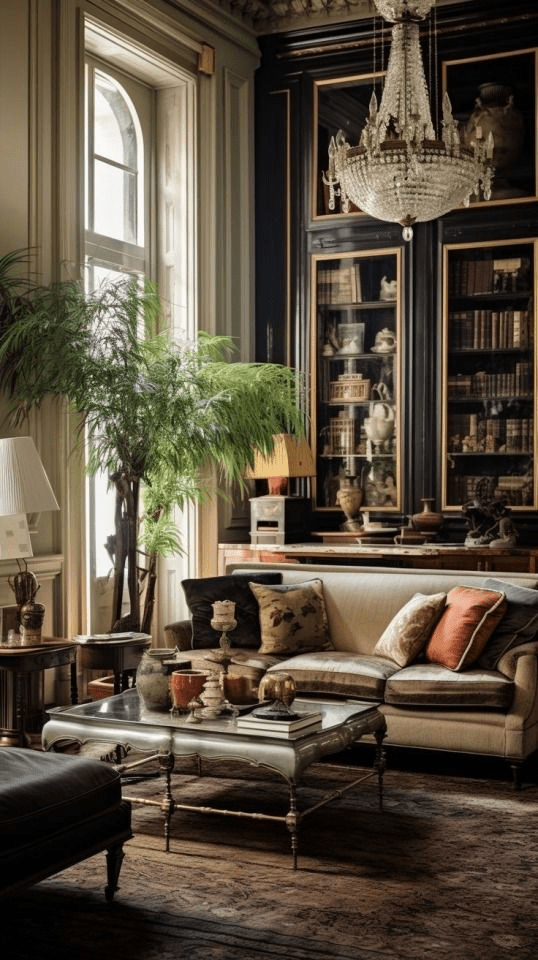
In the world of interior design, old money isn’t just about affluence; it’s about creating an environment that transcends time. It’s about appreciating the craftsmanship of eras past and weaving it seamlessly into the fabric of modern living. So, whether you’re sipping tea in a Victorian-inspired sitting room or lounging in a Louis XVI inspired bedroom, let the essence of old money interior design envelop you in its timeless embrace.
Now, armed with the knowledge of classic furniture, earthy palettes, luxurious fabrics, and antique accents, go forth and transform your space into a sanctuary of refined taste and enduring elegance. Old money interior design: all you need to know, and more, to make your living space a testament to the grandeur of yesteryears!
FAQs
What is the old money trend in interior design?
The “old money” trend in interior design refers to a style that reflects a sense of timeless luxury and sophistication associated with generational wealth. It often involves classic and traditional design elements that have stood the test of time, avoiding trendy or overly ostentatious features. This style is characterized by quality craftsmanship, antique furniture, subdued color palettes, and an overall sense of understated elegance.
How does old money decorate?
Old money decorating tends to favor classic and timeless design choices. This includes using high-quality, often antique furniture, fine fabrics, and traditional patterns such as damask or toile. Neutral color palettes, subtle prints, and refined textures are common. The emphasis is on quality over quantity, and spaces are often curated with a sense of history, incorporating family heirlooms and antiques.
What is the architecture of the old money house?
The architecture of old money houses varies, but it often includes classic and enduring styles such as Colonial, Georgian, Federal, or Victorian. These homes may feature architectural details like crown molding, wainscoting, and intricate woodwork. Grand entrances, formal living spaces, and a sense of symmetry are often prominent characteristics of old money house architecture.
What are old money colors?
Old money colors are typically subdued and elegant. Neutral tones such as creams, whites, grays, and soft pastels are commonly used. Rich, deep colors like burgundy, navy, and forest green may also be incorporated. The goal is to create a sense of sophistication and timelessness, avoiding overly bright or trendy colors.
How to do the old money aesthetic?
Achieving the old money aesthetic involves focusing on quality, classic design elements. Invest in well-crafted furniture, use timeless patterns and textures, and choose a subdued color palette. Incorporate antiques or pieces with a sense of history, and avoid overly ornate or flashy decor. Pay attention to details, such as fine linens, draperies, and art that reflects a sense of refinement.
What is real old money aesthetic?
The real old money aesthetic goes beyond surface-level appearances. It is about cultivating an atmosphere of understated wealth and elegance that reflects a family’s heritage and traditions. This involves not only the choice of furniture and decor but also the overall lifestyle, manners, and values associated with generational wealth. Real old money aesthetic values authenticity, heritage, and a timeless sense of class over fleeting trends.


